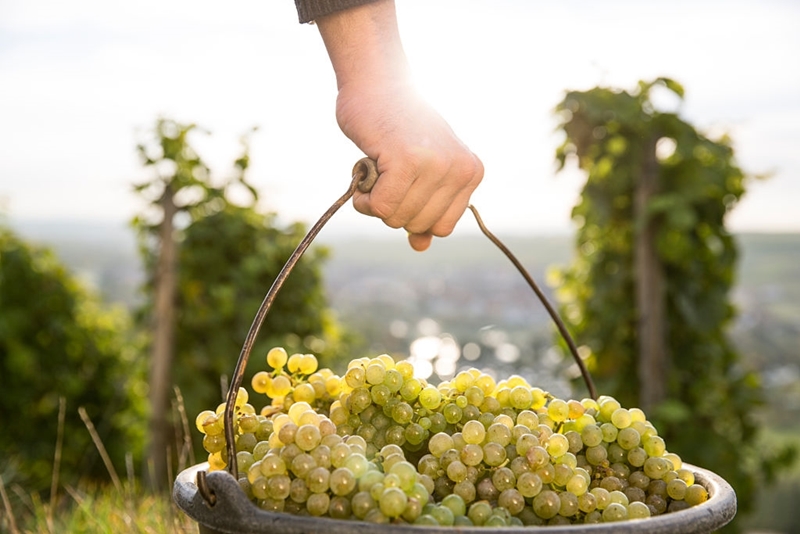Essential steps for a successful harvest at the winery
Ensuring wine quality from vine to glass

In the world of winemaking, the harvest season, known as "vendimia," is a period filled with anticipation and meticulous planning. As the time to collect grapes arrives, so begins the intricate dance of turning fruit into the beloved drink celebrated worldwide - wine. Let's embark on a journey through the intricate steps wineries take to ensure a successful harvest.
1. Selection and Preparation of the Vineyard
Even before the first grape is plucked, wineries invest significant time and effort into selecting and priming their vineyards. This foundational step involves:
- Pruning the clusters: This ensures that damaged or immature grapes are removed, making way for healthier ones.
- Cleaning vine rows: Clearing pathways simplifies the upcoming harvest, ensuring a smoother operation.
- Soil Analysis and Proper Irrigation: By understanding the soil's composition and needs, wineries can implement effective irrigation and fertilization techniques, directly impacting grape quality.
- Thinning and leaf removal: This is done primarily at the vine's base, providing better aeration for the grape clusters and reducing the risk of unwanted fungal growth.
About a month ahead of the harvest, all equipment destined for grape reception, like tanks, hoses, and pumps, undergo rigorous cleaning and disinfection.
To further prepare, wineries manage their inventory, ensuring that there is ample stock of labeled wine to meet demand. They also monitor the wine aging in barrels, ensuring it's protected and stored appropriately. This foresight ensures that during the vendimia, the focus remains solely on the incoming grape harvest.
2. Organizing Personnel and Equipment
A successful vendimia relies heavily on a well-trained and efficient workforce. As the harvest season approaches:
Wineries onboard additional workers, familiarizing them with the right harvesting techniques and the quality standards upheld by the establishment.
Maintenance becomes paramount. All equipment, from presses to destemming machines, undergo thorough checks and necessary repairs to ensure operational efficiency during the harvest.
3. Pinpointing the Perfect Moment
The countdown to vendimia begins with "envero," marking the grapes' color transition. Roughly 40 days post this event, the grapes should reach optimal maturity. Modern wineries, in collaboration with regulatory councils, frequently sample grapes from different parcels, tracking parameters like alcohol content, acidity, anthocyanins, total polyphenols, and berry weight. This data-driven approach aids in ascertaining the best harvest date.
Fieldwork logistics often differ between wineries and regions. While some establishments lean heavily on automation, reaping cost (but not quality) benefits, others prefer an almost manual approach, incurring higher labor and operational costs. Furthermore, organic vineyards demand a substantial manual effort and skilled labor to make the right calls at every step.
4. Logistics of Storage and Transportation
Post-harvest, the logistical challenge of storage and transportation arises.
Wineries must ensure they have enough storage space like fermentation tanks where grapes can be transformed into wine, with the environment tailored to maintain requisite temperature and humidity levels.Transportation logistics involve synchronizing collection schedules, having the right transport vehicles available, and mapping efficient routes. The overarching aim? Preserving the grape's integrity and preventing any deterioration en route.
5. Quality Control and Winemaking Process
As grapes arrive at the winery, a rigorous quality control process kicks in.
Wineries painstakingly select and classify incoming grapes, sidelining those that don't match their set quality benchmarks.
Once deemed fit, grapes embark on the winemaking journey. This involves fermenting the grape juice, followed by the wine's aging process. Throughout this phase, wineries deploy measures to amplify the grapes' natural traits, from temperature regulation to using oak barrels, adding layers of complexity and flavor to the wine.
Behind every bottle of wine lies a complex ballet of planning, expertise, and passion. From vineyard selection to the final aging process, wineries spare no effort in ensuring that the wine produced is a testament to their dedication to quality and the timeless allure of viticulture.
Founded in 2007, Vinetur® is a registered trademark of VGSC S.L. with a long history in the wine industry.
VGSC, S.L. with VAT number B70255591 is a spanish company legally registered in the Commercial Register of the city of Santiago de Compostela, with registration number: Bulletin 181, Reference 356049 in Volume 13, Page 107, Section 6, Sheet 45028, Entry 2.
Email: [email protected]
Headquarters and offices located in Vilagarcia de Arousa, Spain.